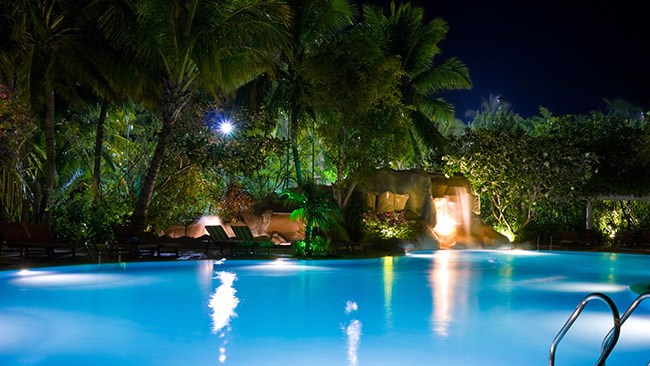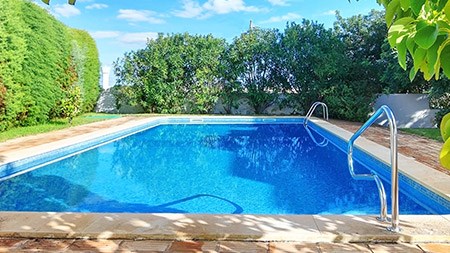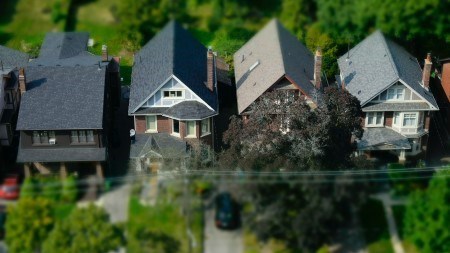A look at all the options and what to consider when building a pool or dealing with the challenges of renovating an existing pool.
A fully tiled swimming pool is an alternative to a traditional marbelite or fibreglass finish, creating interesting patterns and adding colour. Tiles are, however, an expensive option. The yin yang lounger by Dedon from Cane time is weather resistant, UV-stabilised and designed to withstand extreme weather conditions including sun and saltwater.
A really good well-kept entertainment area with a pool, decking and patio that is covered or has a retractable awning makes it easier to sell the property. Some agents believe that it can add as much as R100 000 in perceivable value to a property.
– Myles Wakefield, CEO Wakefields Real Estate
South Africans have the choice of several pool types:
- Old-fashioned concrete pools finished with marble plaster.
- Precast fibreglass pools.
- Concrete shells lined with fibreglass.
- Fashionable eco pools, which use plants as a filtration system.
Precast fibreglass pools are the most reasonably priced and in-demand pools in South Africa, according to Bruce Deeley-Smith of Robust Pools. He also explained that fibreglass pools are manufactured in a factory and placed into an excavated hole in the ground, a process that takes about two weeks. The quality control at the factories is generally excellent, and fibreglass offers good value for money. They are easy to maintain as they do not stain or chip, which would allow algae to grow. Fibreglass is also warmer to start with and heats more readily than a Marbelite or Gunite pool.
Jason Sanders of Blupool agrees: “The main reason people would choose a marbelite pool is that they like the look or feel of the finish. Otherwise, prefabricated fibreglass pools are the best option.” Myles Wakefield, CEO of Wakefields Real Estate, sees a swimming pool as an investment that will enhance the value of the property, “Hence its positioning is crucial. It needs to be close to the house and have easy access to and good flow with the entertainment area. It also needs to be private. Pools that are at the bottom of the garden or are open to the street are not popular.”
Soil types are not all suitable for pool construction, so they should be checked before construction begins. Homeowners should also check for municipal servitudes. These could be alongside or through your property. Utilised for the provision of water, and sewerage pipes could pass right where you want your pool. Speak to an experienced pool-maintenance service to assist:
- With the design of the pool.
- The positioning of the pool.
- Siting of the filter, pump and weir.
These will all have an impact on creating the optimum conditions for the fuss-free maintenance of a swimming pool. Your pool builder should be a member of the National Spa and Pool Institute of South Africa (www.nspi.co.za).

What swimming pool size is best?
Pool sizes have changed dramatically in the past 30 years. From an average-size pool of 12m x 6m in the 1980s to the current 6m x 3m, and you’re looking at probably R45,000 upwards. Dependant, of course, entirely upon location, and specific requirements.
What pool shape should you go with?
Circular, oval pools with water features and fountains have become outdated, and in-demand is the more practical rectangular pool set in a balau deck. A layout which meets the pace of our modern lifestyle.
Are there any trends to watch?
A trend for straight-lined pools with sandstone paving and positioned close to the house, has been noticed in the Upper Highway area. And then particularly where the pool can blend into a sea view, rim-flow pools have become a sought-after feature in upmarket homes. Black and charcoal pools are no longer fashionable says Grant Gavin, owner of RE/MAX Panache. “This trend has since reverted back to the white pool with sparkling blue water. I think people want to see what is actually in their pool.”
“Another trend is to have a deep covered patio that connects the living area to the pool,” says Myles Wakefield, CEO of Wakefields Real Estate. “The pool surround should enhance the connectivity to the home and its entertainment area. Wooden decks are the most popular, followed by paving, while slasto is considered outdated. Decks often extend the patio or create a level entertainment space on ground that slopes.”
What’s the best way to light my pool?
Lighting takes a swimming pool from a functional fixture to what can be a striking feature at night. Jack Miller, branch manager at Waterlinx Pool and Spa, explained that there are two options for lighting your pool. Traditional incandescent globes, or LED globes which have various colour options, and draw less electricity. He further suggested that when installing lighting into your pool, ensure that the positioning of your lights will give the best effect. Also take into consideration the colour of your pool finish, in choosing the best-LED option, for example, a colour-changing LED will lose impact on a pool with a dark colour finish. Arthur Fonseca of Province Lighting also suggests linking your pool lights to your home automation system.
What do I need to know about heating a swimming pool?
Your options vary depending on where you live in the country, says Glen Symes of Hi-Temp Pool Heating. “There are three methods of heating swimming pools, ” he explains. “The first is utilising solar panels. There is only a once-off cost involved, and in areas such as the KZN coast, solar panels can heat a pool to 28–30˚C for 11 months of the year. A 24 sqm pool will need seven panels. If you live in an area that does not get enough sunlight, a heat pump is probably the best option. A heat pump for an average 4m x 6m swimming pool requires a 7.8-kilowatt pump. A thermal blanket is a necessity with a heat pump to reduce electricity consumption,
Eco pools are the pools of the future
In a conventional swimming pool, nutrients collect in the water from plant debris falling in the water and from swimmers’ bodies. These nutrients feed algae and bacteria, causing black algae to accumulate on walls or water to turn green. The addition of chlorine to the pool water is used to remove this from the conventional pool.
Whereas, in an eco pool plants are used to filter the water. The plants remove the nutrients from the water, leaving nothing to feed algae. Therefore, the water remains clean and fresh. You are getting into living water, which is a much gentler environment than a chemically treated pool. The pool water is pumped through the filtering plants not actually in the pool itself but growing around it in a separate area. Eco pools are more expensive than conventional pools. The aesthetic appeal of these eco pools has led to the suggestion that they are swimming pool and water feature in one.
How can I update my swimming pool?
With summer on the way, the demand for pool renovations is bound to increase. Replacing old paving and scum tiles is a popular request, along with relining marbelite pools with fibreglass. The size of a large swimming pool is made smaller by filling in a section of the pool - a costly exercise. Changing the steps and fitting salt-chlorinators is also a frequent request. Zane O’Donovan of Eco-Sundecks says that it is simple to change the shape of a swimming pool using decking. ”By laying decking that extends over the pool by 200 to 300mm, we can change the shape of the pool. It is also possible to reduce the size of a swimming pool by installing decking. But there are implications for both pool maintenance and safety if a large portion is covered. Ensure that you can still brush the walls under the decking. If you have children, you need to consider the fact that they could hit their heads on the deck, which is extremely dangerous. You could extend an entertainment area by installing a raised deck over the pool under which you can walk to clean the pool and which poses no danger to swimmers.” O’Donovan says that decking is a popular option for updating paving.
Where should you build your pool?
The position of the pool and pool area should fit into the flow of the home, and provide an added entertainment area, says Grant Gavin, owner of RE/MAX Panache. “Sticking a pool around the corner, or away from a natural entertainment or veranda area will give the home a poor flow and might affect the potential resale value of the property. People with younger children want the pool to be in view.”
Pool Safety
Although most people build a swimming pool for their enjoyment while they are living in a house, it is essential to consider who may buy your home in the future. Janine White, the owner of Nets For Africa, suggests that homeowners seek advice about pool coverings before starting to build. “Not all pools can have a pool net,” she explains. “A rim-flow pool is often unable to support a net, and the pool then becomes dangerous for children and pets.”
There are several different types of pool coverings available, which serve different functions. A leaf cover is made of shade cloth and is safe for pets but not children. Pool covers can insulate your pool and therefore extend the swimming season considerably by raising the temperature of the water by as much as eight degrees. The only option for keeping children safe, however, is a net.
READ MORE: Do you really want a pool?
Pros and cons of having a pool
- Cooling yourself down in your home swimming pool after a long hot day is pure pleasure.
- A fibreglass pool is relatively simple to maintain and is easily found and installed.
- Building a pool does generally add appeal to your property.
- As an investment, the cost of a large pool, together with features, can drastically detract from actual enhanced value.
Find deals and homes on sale with Private Property, and land the perfect house to make your home.
Updated 26 August 2021




